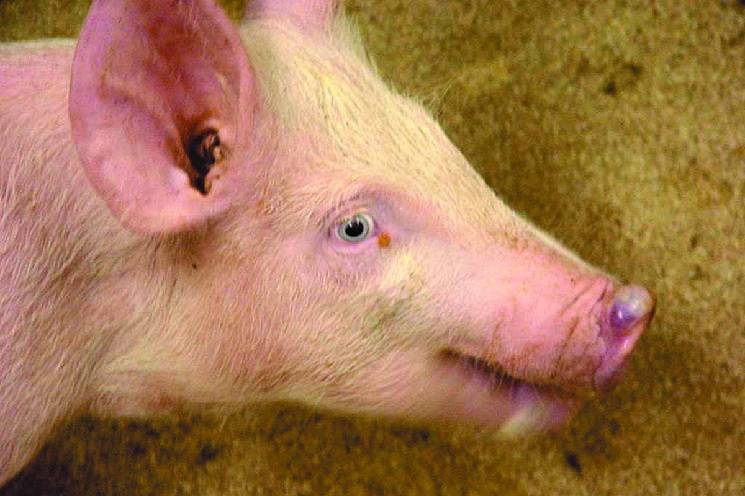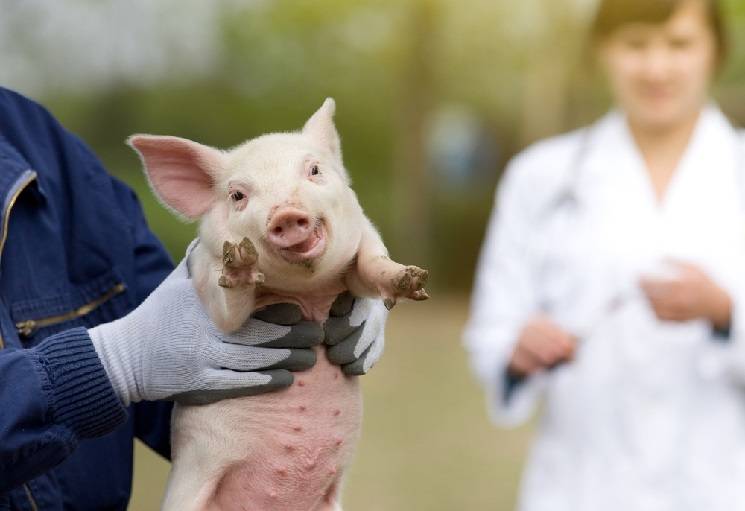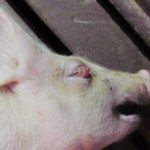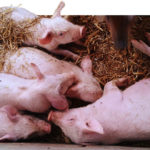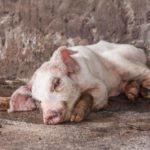Regular examination of newborns, correct diagnosis and timely treatment are the main factors contributing to the cultivation of a healthy pig population. If a piglet's ears turn blue, you can decide what to do after testing and making a diagnosis. It should be borne in mind that this symptom is characteristic of a number of diseases.
Why do pigs' ears turn blue and what should be done?
There are several diseases of pigs that cause the skin of the ears to turn bluish.
Porcine reproductive and respiratory syndrome (PRRS)
Blue spots appearing on the skin are one of the first signs of infection with the disease. Moreover, most often the syndrome affects sows. Enterovirus, which spreads in lung tissue, is the causative agent of the disease. The danger of the disease is also manifested in the fact that the offspring suffer.
Piglets experience nervousness, slight trembling of the whole body, and sometimes convulsions. The offspring is born full-term, with a normal weight, but a poorly developed sucking reflex negatively affects the further development of the babies. If laboratory tests confirm the diagnosis, animals are vaccinated.
Chlamydia
Pathogenic chlamydia bacteria affect the intestines and respiratory tract of animals. Newborn piglets are most often infected by sows. Symptoms of the disease: fever, high body temperature, convulsions, loose stools. If treatment is not started in a timely manner, the piglets die after 2-4 days. Since chlamydia is expensive to treat, sick newborns are most often slaughtered.
Dysentery
The infectious disease is characterized by intoxication and damage to the colon. Manifestations of the disease:
- blue ears;
- frequent diarrhea;
- sudden weight loss;
- lack of appetite;
- high body temperature (up to 40-41 °C).
At the first signs of illness (stool disorder, loss of appetite), animals can still be cured by injections of antibiotics and anti-dysenteric serum.
Aujeszky's disease
In addition to blue ears, symptoms of the disease are manifested in increased body temperature, vomiting and convulsions, decreased appetite against the background of increased excitability and severe thirst. The central nervous system of pigs is most affected by the disease. The mortality rate is 30-35%.Sick animals are most often slaughtered, since treating animals is expensive. Meat products can be used for food only after thorough heat treatment.
Salmonellosis
If animals are not properly cared for (cages are not cleaned, food dishes are washed carelessly or rarely), the likelihood of piglets becoming infected with salmonellosis increases. It must be borne in mind that newborns suffer more from the disease than adults. In addition to blue ears, piglets experience conjunctivitis, impaired respiratory function, and body temperature increases. Treatment comes down to taking the antibiotics Levomycetin and Syntomycin.
Other reasons
Sometimes the cause of blue ears can be heart failure. Since the blood vessels of the ears are poorly filled with blood, the skin takes on a bluish or whitish tint. The disease is not only congenital.
Signs of diseases
Usually, blue skin of the ears is not the only symptom of an animal infection. When examining a pet, pay attention to the following deviations in the behavior and health of pigs:
- pet's appetite and body temperature;
- changes in behavior (excitability or inhibition);
- regularity and quality of stool;
- strong thirst;
- convulsions.
In order not to make a mistake with the diagnosis, it is recommended, in addition to an external examination, to do laboratory tests.
Prevention of the problem
There are rules for caring for animals, following which it is easy to raise healthy animals:
- thorough cleaning and disinfection of premises;
- the diet is based on balanced feed;
- regular veterinary examination of piglets;
- isolation of infected animals.
An excellent preventive measure is vaccination of both adult pigs and newborn piglets.
It is not recommended to take lightly the blue ears of piglets or the formation of bluish spots on the skin. When your pets show the first signs of illness, contact a veterinarian. Only the correct diagnosis and direction of treatment will allow animals to “get back on their feet.”


